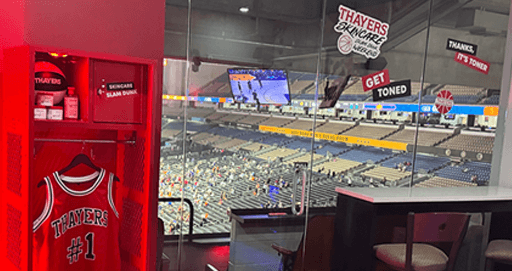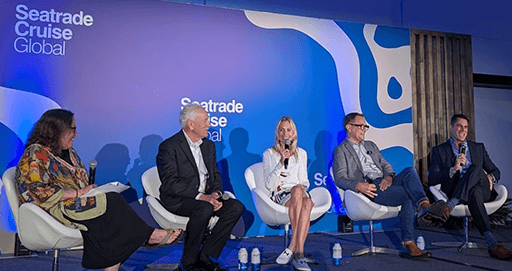‘Internal Communications’ is truly a misnomer. As we all have come to know, there’s actually no such thing anymore. Anything said in a staff meeting or a company newsletter has both the potential and likelihood of being shared outside the organization via the press and social media. The key to great internal communications today is being able to develop content specific to each internal target while remaining keenly aware of how it may be perceived outside the organization.
Nearly a year and a half ago, Coyne PR was hired to manage the retail partner communications platform for the North American arm of a Forbes Top 100 global company. Our charge has been to elevate the editorial quality, increase platform participation and most importantly, build and extend trust with the retail partners. In addition to leveraging core internal communications and editorial know-how, we’ve leaned heavily on our 40+ years of external PR experience and best practices we’ve learned from big events, branding campaigns, product launches and media relations to help achieve these goals, significantly growing engagement as a result.
As an agency, we knew this account would require 360 communicators who are experts in both external and internal communications. For us, it was important to have vice president-level professionals leading these conversations and strategies.
While internal and external PR seem to be completely unrelated on the surface, the principles and strategies we’ve used to shape external PR programs have proven extremely valuable in guiding our internal communications efforts and navigating challenges – especially during COVID-19. With this mind, we wanted to reflect on our experience, the similarities between the two and our key takeaways.
Understanding your audience – Similar to every successful PR plan, effective internal communications is grounded in good research. From day one, we carefully reviewed user habits – What are they reading? What content is resonating? How much are they reading? When are they reading the content? Combining this with primary research (surveys, one-on-one conversations, test and learn content) has enabled us to make key adjustments to increase viewership and engagement (comments and likes). However, learning and research never stops. Publishing content in the COVID-19 environment has required us to adjust; to meet our audience’s greater appetite for information, we shifted to a more frequent cadence.
Building relationships with key stakeholders – Developing great ideas and recommendations is important, but communicating that vision to key stakeholders is equally critical. Working in partnership with our client, we’ve held regular meetings with company leadership to reinforce the platform’s goals and approach. Securing their buy-in up front helps to avoid tough conversations down the road, maintain the integrity of the communications effort and stay informed about information we can leverage for our efforts.
All good calendars are subject to change – Many of the editorial calendar stories planned for March became irrelevant and inappropriate overnight due to COVID-19. Similar to the ability of external communicators to successfully and quickly adapt due to breaking news or other circumstances, in just a few days, we transformed the platform from a more feature-driven storytelling approach to a go-to resource offering regular updates on COVID-19 news, programs and initiatives to support retail partners’ businesses.
Balancing agendas – It’s critical to maintain the integrity of the editorial content while balancing the needs of the client and retail partners. Working as a member of the internal communications team, but belonging to an external organization, provides us with the needed distance to push back when the messages become too closely aligned with a single perspective. Decision-making should always include time to take a step back and consider all of the information available to tell the best possible story. Leaning on the equity built with key stakeholders makes navigating this challenge a bit easier.
Strategic storytelling – A good storyteller always starts with the headline in mind. What’s the outcome we want? Internal communications storytelling follows many of the same core external communications principles:
- Newsworthiness – Is this topic interesting enough? If not, what’s missing and how can we leverage to tell a better story? Is it better told as a series of stories?
- Relevance – How does this impact the retail partner’s business?
- Timeliness – Is now the right time for this topic given external noise or sensitivities impacting a retail partner’s business? Is it ok to publish a softer, lighter story now, when much of the conversation is still surrounding COVID-19?
- Honesty – How do we maintain integrity on a challenging topic without sounding negative?
- Appropriate voice and tone – Who should deliver this message? How should they say it?
- Third-party spokespeople – Who can lend additional credibility to our story?
We’ve leaned on each and every one of these, especially during COVID-19. Regularly asking these questions can make the difference between an impactful communication and one that completely misses the mark.
Presenting the Story – A picture tells a thousand words in internal communications, as it does in a good media placement or social media post. In many cases, we have spent more time identifying an image than we did to write the actual story. While that may seem inefficient, it is certainly time well spent. Creating a premium user experience through an impressive visual, insightful video message, compelling infographic and eye-catching headline is extremely important. Building familiarity though a branded content series can be the difference in establishing successful engagement – whether you are developing internal storytelling or pitching a story to an influencer or editor.
Merchandising Results – Closing the loop with key stakeholders is critical. While securing upfront buy-in regarding your approach can point your program in the right direction, failing to keep key stakeholders apprised of performance can be detrimental. We have developed a quarterly reporting system featuring platform engagement, top performing/trending content, viewership and combined it with a thorough, thoughtful assessment summary that speaks to the good as openly as the opportunities for improvement.
Take a moment to pause and look at the tools in your toolbelt, as they can valuable for any type of communication you’re currently managing!




